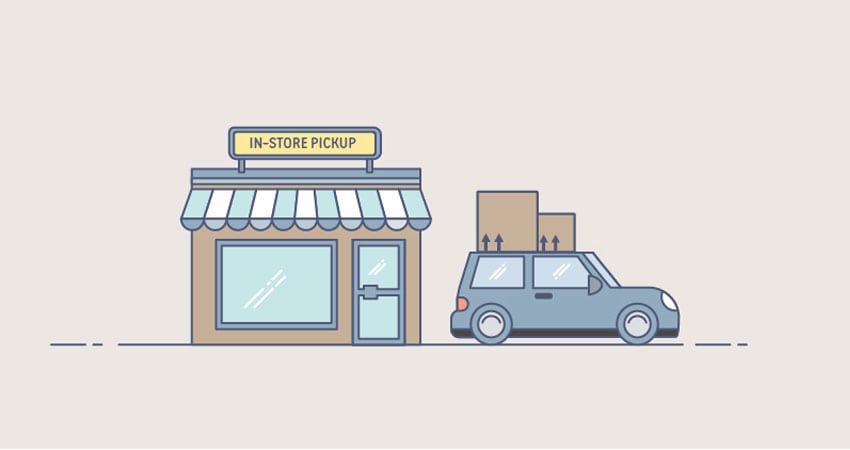Have you ever had the experience of seeing the same stranger whizzing past you multiple times in the grocery aisle, then realizing they were fulfilling an ecommerce order?
What about shopping for an item that’s listed online, but out of stock when you check the shelves? If so, you’ve seen firsthand why the latest models of fulfillment need rethinking.
No shopper wants to feel like they’re racing the entire internet to grab that last onion in the produce section at Whole Foods on a Sunday afternoon, nor feel the frustration of knowing the item they want is in store, but not available to them.
In-store fulfillment models, including gig delivery services and buy online pickup in store (BOPIS), proliferated during the early days of the COVID-19 pandemic and are credited on earnings calls for lifting brick and mortar stores’ revenue potential and holding margins steady.
And yet, gig delivery and BOPIS fail to consider the entire customer journey, especially the one that includes the unfortunate souls pushing a cart through a store’s aisles to make their purchase at a physical checkout. It’s enough to make the metaverse seem appealing.
If the very best of ecommerce technology can only imagine sending strangers into the store to facilitate a pickup instead of the customer themselves, are we really enabling any truly new behaviors?
The challenge being laid today is to understand that in-store fulfillment is a workaround, not a scalable solution, for retailers penetrating further into ecommerce. If your physical shoppers have a bad experience because of technological processes you’ve enabled, you have failed them in the overall customer journey.
Store Struggles
Store fulfillment causes disruptions and delays at retail locations. Shelves are bare at grocery stores on weekends and rush hours, as gig workers crowd the aisles and wipe stores out of items ultimately delivered to homes.
BOPIS models are designed to benefit the retailer, not the customer, essentially outsourcing the last mile to customers themselves by transferring the burden of transportation and delivery. BOPIS further forces employees to take time away from other duties searching for products set aside for pickup by customers who then confuse checkout lanes and clog the flow of traffic.
Most importantly, demand planning and inventory allocation can never be entirely accurate when fulfilling ecommerce orders out of retail store locations. There is no way to update real-time inventory levels and orders are often only partially fulfilled as products are promised to various channels, inevitably leaving some shoppers out of luck with a poor customer experience. At what point did it become acceptable to consistently disappoint consumers?
Redefining Brick and Mortar
As ecommerce continues its shift to consumers’ main mode of purchase, we are seeing the emergence of the fifth wave of ecommerce. Brick and mortar no longer means retail stores, but warehouses and fulfillment centers dedicated to ecommerce orders, guaranteeing accurate inventory levels and setting retailers up for long-term success.
We are already seeing retailers like Kroger adopt this model, opening fulfillment centers and operating delivery services in markets where it does not operate retail stores, meant specifically to serve its expanding base of ecommerce customers.
Instacart has done the same, acknowledging that their future sits in facilitating the logistics of food delivery – not in crowding the aisles of local grocery stores.
Consider the Customer Journey
Retailers must consider the impact of their ecommerce practices on the holistic customer experience. Whether shoppers are having to throw elbows in the dairy aisle or wandering stores with shelves that have been emptied to fulfill online orders, many are being lost in the shuffle when in-store fulfillment is prioritized.
With the emergence of connected fulfillment networks, linked by software that centralizes order sources, inventory availability, and delivery options in one place, brands are empowered to provide the customer experience any given shopper is seeking, no matter their preference.
A positive customer experience for all can be restored by utilizing warehouse fulfillment to deliver to customers at home, and giving back the in-store experience to the shoppers who have chosen it.
Frank Garcia is Head of Operations for Flowspace

